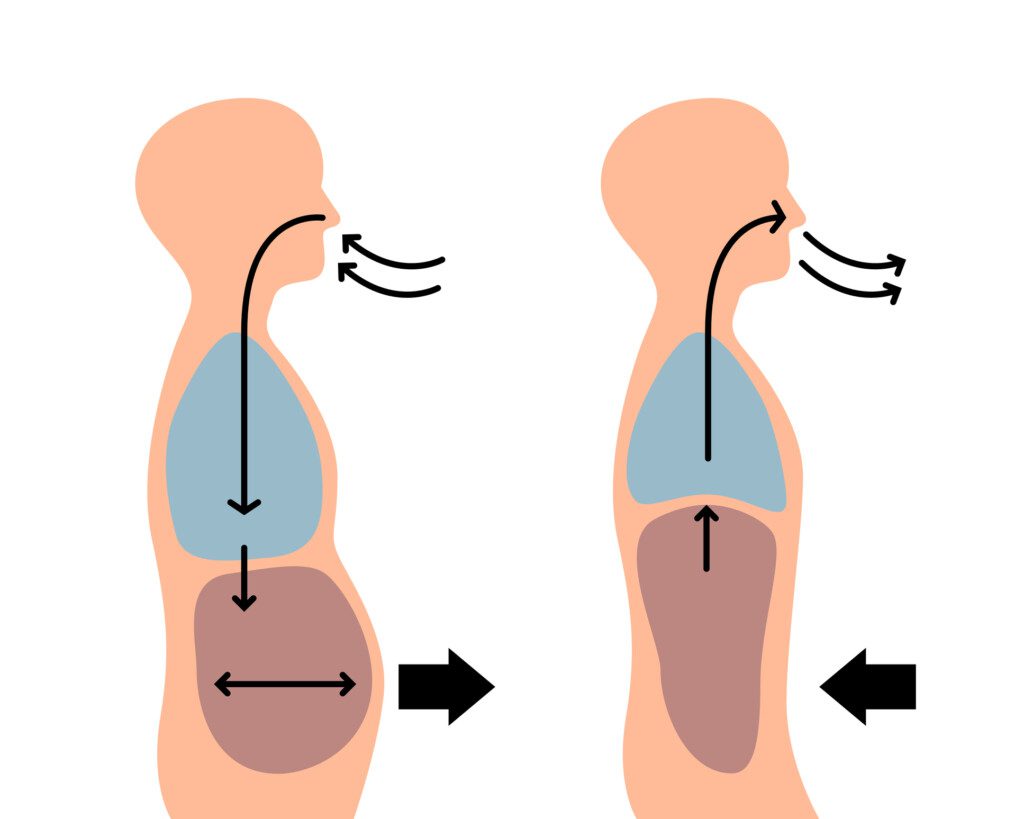Articles

Reskilling to Boost Your Career
1 de May de 2024

Deadlines, objectives, and constant meetings. The contemporary work environment can be incredibly stressful. We move from one task to another in autopilot mode, often without considering what we’re doing or where we’re headed. Amidst the hustle and bustle of daily routines, we may even overlook our own well-being. That’s why it’s crucial to take a moment to pause and reconnect with ourselves.
We live life so intensely that we often overlook a natural and involuntary process of our body — one that could be the key to our well-being. Breathing —something we do about 21,000 times a day— deeply impacts our organism and influences many aspects we typically overlook.
During exhalation, we trigger the brain’s parasympathetic state, creating a feeling of calmness and serenity, aiding in emotional regulation and anxiety relief. Conversely, inhalation activates the sympathetic state, priming us for action. Considering this, breathwork practice can offer us numerous benefits.
Breathwork, simply put, involves any exercise that heightens our awareness of breathing. It encompasses a range of techniques aimed at intentional breathing to regulate the nervous system. This practice of mindful breathing offers a multitude of physical, mental, and emotional benefits. While there are various approaches to breathwork, they all recognize that breathing extends beyond its basic physiological role — it’s a potent tool for impacting both body and mind, fostering genuine personal transformation over time.
Yoga, Tai Chi, and Buddhism are some of the ancient Eastern practices that could be related to the origins of breathwork, as they employ various breathing techniques to harmonize the body and mind. However, most of the breathwork techniques used today were primarily developed in the 1960s and 1970s.
Among the pioneers of this conscious breathing technique are Stanislav and Christine Grof, Leonard Orr, and Sondra Ray, who were the creators of two original branches: Holotropic Breathwork and Rebirthing Breathwork.
Getting started with breathwork is much easier than you might think. Just follow these steps:

In the workplace, some companies arrange guided sessions for their employees, either one-on-one or in groups. Led by an expert, these sessions involve breathing exercises aimed at inducing deep relaxation. The duration can range from 10 minutes to an hour. Major corporations like Google, Amazon, and Spotify have already embraced these practices for their workforce, recognizing their many benefits.
During Wellness Week, The Switch and EAE Barcelona hosted an Active Meditation event with SUCO, open to employees and students, which included the practice of breathwork.
When we engage in mindful and deep breathing, we enhance the flow of oxygen to the brain, which contributes to improving mental clarity, focus, and the ability to generate creative ideas.
Individually, breathwork helps us connect better with our emotions, needs, and opinions, promoting assertiveness and respect. This not only allows us to be more tolerant of others but also contributes to creating a warmer and healthier environment for the entire team.
When breathwork is practiced collectively within an organization, its benefits multiply, as both trust and communication among team members can be strengthened.
It aids in relaxing the body, lowering stress levels, and enhancing personal well-being. Practicing this collectively in the workplace during busy periods can help alleviate stress related to these situations and, consequently, boost our work efficiency.
Breathwork is known for its ability to boost creativity, focus, and productivity, while also fostering stronger work relationships and stress management. This practice emerges as a holistic tool for enhancing well-being and performance, both individually and in the workplace. Its adoption, backed by top companies, showcases its positive impact on quality of life and work dynamics, making it a valuable strategy for cultivating a healthier and more efficient work environment.